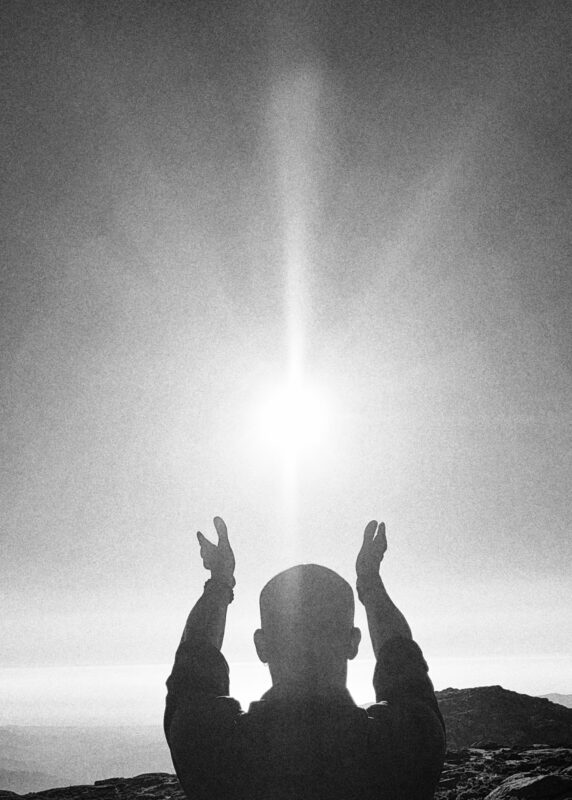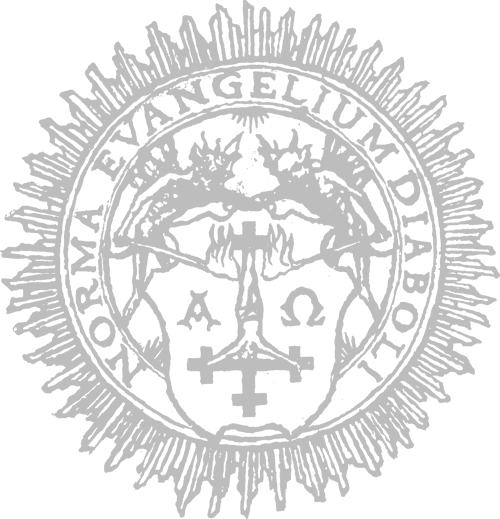ANGRENOST
ANGRENOST has released three full-length albums until now: Planet Muscaria (2013), Nox et Hiems (2017), and your current album on EAL PRODUCTIONS: Magna Lua Ordem Mística (2023).
They make for an unusual discography. All three are indeed markedly different from each other, while remaining bound, if we take a step back and reason outside the box, in terms of a certain spirit and underlying intensity.
Your debut, Planet Muscaria, was pointing toward the future and the stars – using occasional samples and synths, a cold and almost mechanical drum sound, saturated vocals with a wealth of FX used quite creatively if I might add, lyrics referencing technology and epic, violent riffing.
Pursan – Although I fully respect your vision and interpretation of Planet Muscaria, if so, sonically it may sound somewhat futuristic and perhaps even in a certain way spatial due to the composition, conceptually nothing could be further from the truth. The direction is not outward or towards the stars as you say, but rather inward, towards the equally infinite space within, the human microcosm.
When I think about the album, I am haunted by a certain ambiguity and diffuse feelings. While it is an album with the characteristic credentials of ANGRENOST, due to its negativity, darkness, and intensity, it is very personal and even autobiographical. Shortly after the release of our first EP Evil in 1998, I decided to leave ANGRENOST. The reasons are very personal, and without wanting to be too specific, I can confess that I was personally in a very dark and dangerous place. ANGRENOST has always been inspired by very dark energies – in fact, that is the very reason for its existence – and in the chaotic state I was in, I felt that if I continued to feed the inner demons with even more darkness and negativity, something very serious and destructive could happen at any moment.
Despite A. Ara, after my departure, deciding that it made no sense to continue ANGRENOST, after a while I started writing new lyrics, and those lyrics were directly inspired by those dark times that made me leave the band. Planet Muscaria is inspired by my own visions and destructive experiences. Philosophically, in the relationship between Man and the complex mechanics of the universe and the abstract laws of creation. As above so below… as outwards, so within.
The album could almost have been released under the Pursan label and not ANGRENOST, however, I thought that since everything was interconnected, I should release it as ANGRENOST. The entire album was written and composed by me around during the first decade of the ‘00s and kept in a dusty drawer. Only in 2010, after meeting Erdsaf, did I decide to materialize the album. Erdsaf, besides being an excellent musician, is also a producer with his own studio and the album has much of his imprint.
The challenge for us when recording the album was to respect the original vision I had idealized many years before. Although recorded in 2012/2013, in my mind, the album should have been released many years earlier and that ends up influencing all the work, both in terms of production, the use of instruments, and various elements. The programmed drums were deliberately chosen so that the entire composition would sound violent, yet mechanized and inert. Planet Muscaria is a beast that manifests in a violent, infernal, and abstract atmosphere, reflections of the internal chaos I experienced.
A.Ara – It was 2010 when Pursan and I got in touch again regarding ANGRENOST. At that time, I was living in the US. Pursan was presented with an offer to have our demo “Evil” remastered and re-released. This seemed like a good idea as we had a lot of sound issues in the original recording and this provided the opportunity to, in some way, correct these. I had the original DAT and he was having some discussions with TT from ABIGOR to remaster it. This ended up not materializing, still around that time Pursan shared that he wanted to start ANGRENOST again. While I didn’t agree with it and decided not to join, I did understand his reasoning and supported him with moving on. We remained in touch with him sending me lyrics and demos of what was to become Planet Muscaria. In my view this album is a bit of an outlier in the history of ANGRENOST. A way to describe it would be to call it Pursan instead of ANGRENOST, as it is an extremely personal and inward facing work, almost a purge. Him and that particular “era” of his persona are the concept and center of gravity of all that was created for that album. It is a cosmos, but one of flesh and blood. In many ways, the stars which you refer to and visualized through the lyrics and musical aesthetics of that album, are fragments of inner constellations. Some of them I believe dead, others still burning bright.
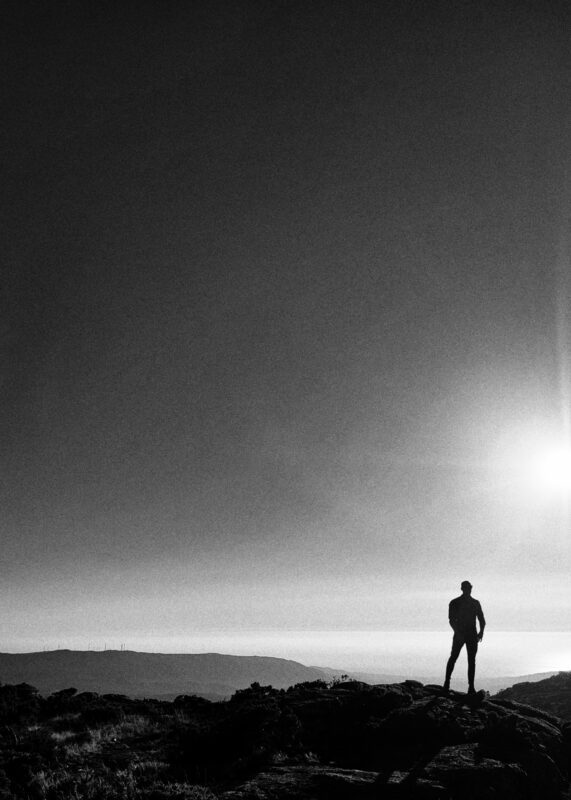
The sophomore album, Nox et Hiems, appears as the debut’s polar opposite. It is violently reactionary, as if 2199 had morphed into 1993: a guitar tone vaguely reminiscent of Under a Funeral Moon, a slower overall tempo, natural drums that could have been recorded in your rehearsal room, and a decrepit, pitch-black atmosphere throughout adorned with possessed chants coming from ancient times.
Pursan – After the release of Planet Muscaria, I was in contact with W.uR (MONTE PENUMBRA, ISRATHOUM, AB IMO PECTORE), who lives a few kilometers from Viana do Castelo, where we are from. W.uR knew ANGRENOST since the release of Evil and when we established contact, we both realized we had to collaborate artistically. Enobolico (Wavelength Satan, Maldição, Murmúrio), who had recorded the guitars for Planet Muscaria, had left ANGRENOST, so W.uR’s entry as the guitarist for ANGRENOST was very natural. Besides a natural complicity between us, personally, W.uR is one of the guitarists I admire the most. The way he approaches the instrument and the composition formulas he uses make him a unique and uncommon artist and musician. I think he should be much more recognized than he is.
Nox et Hiems, according to my vision, was to be a direct, raw, and pure album, with minimal rumination. Yes, in terms of production, Under a Funeral Moon, among others, was one of the references. If that’s how I see the album sonically, in terms of composition, which was under W.uR’s stamp, the album has a unique, dark, and cold touch but with class and finesse. I think W.uR reflects all his class as a guitarist on the album. His riffs are unmistakable.
When you say the drums sound like they were recorded in the rehearsal room, you’re completely correct. We wanted the drums to sound as organic as possible, round and warm, without any editing. We even used a minimalistic kit. To give you an idea, we only used one tom. I think with the rhythmic section approach we took, besides achieving a very minimalist and organic sound, W.uR’s guitars can breathe and shine through the darkness.
It is in Nox et Hiems that I experimented for the first time singing in Portuguese, and that moment is pivotal for me as a vocalist. Just like with the drums, I wanted the voice to be unedited and as direct and real as possible. To me, a good vocalist is one who can shape words and emotionally charge them in a congruent way. To make this sound as real and pure as possible, I recorded almost everything in one take. The process was extremely fast and spontaneous. Since ANGRENOST does not need rehearsals, I didn’t even know how it would sound in the end. In fact, what was recorded was what came out of me as it had to come out, and I am very satisfied with the final result. I may seem biased, of course, but Nox et Hiems is an album with a unique character, and I am very proud of it.
A.Ara – I only listened to this album very recently. I find it to be an interesting work, in particular the concept and musical composition. The recording is very stripped down, every aspect of it decomposed and purified to the bare minimum. From what I understand of the choices made, not a conceptual reaction to the previous album, but definitely a conscious artistic decision. The music is heavily rooted in the second wave of black metal tradition. Under a Funeral Moon is a good reference, especially the guitar tone, and I would add in some moments, in particular regarding the bleakness, DODHEIMGARD’s first album Kronet til Konge. When I first listened to it, I was intrigued by some aspects of the musical composition. They have a strong ritualistic character. I was then made aware that W.uR from MONTE PENUMBRA, who is close to us, was responsible for the composition of the majority of the music in this album. I believe his unique style fits perfectly the concept of the album.
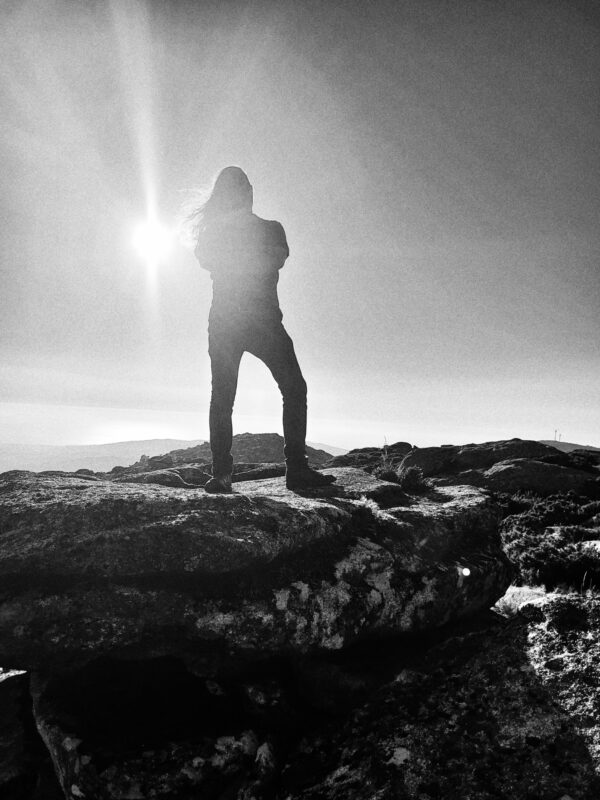
Your latest album, Magna Lua Ordem Mística (The Mystical Order of the Great Moon), the one we released on EAL Productions, benefits from Necromorbus’ crushing production, awesome musicianship on all levels, and a sense of songwriting that has never been sharper. The enthralling atmosphere of the album – at times not unlike the majesty of early EMPEROR, although you are objectively coming from a different musical angle – and its intense evocation of a bleak otherworldly spirituality are what grab me, personally, as a listener. It is way more than good riffs unfolding, or ethereal keyboard arrangements arising suddenly like dead trees in a sea of fog to a lost wanderer… it is a world that is summoned in front of the attentive listener… And that is arguably when Black Metal is at its best!
Pursan – Personally, I have always maintained that Black Metal can only be considered Black Metal when inspired by darkness, archetypes such as the devil and evil. If it doesn’t have these aspects at its core, it may sonically sound like Black Metal, but it is nothing more than a sheep disguised as a wolf. Black Metal can metamorphose into many forms sonically, but for me, a good Black Metal album is one that manages to materialize the concept and imagery it proposes. This topic is quite complex to put into words as it can vary according to each person’s interpretation.
With Magna Lua Ordem Mística, what we wanted was for the compositions to embody the lyrics and the concept as congruently as possible.
I agree with you that it is when these images are projected onto the attentive listener that Black Metal sounds its best. Ultimately, Black Metal should be immersive and capable of transporting the listener to another plane. In the case of Magna Lua Ordem Mística, one is transported to a metaphysical plane where one can connect with these dark forces cohabiting in another realm.
A.Ara – Thank you for your words. You mention EMPEROR, and indeed we are coming from a different musical angle. There are of course some similarities that can come to mind: we are from a small peripheral town, very isolated with a strong presence and influence of nature and we have a core of conceptual work (lyrical and musical) built by two individuals who know each other very well and have shared their formative years. Also, I as composer, Erdsaf as responsible for the keyboard arrangements and bass and Magnús with percussion, all have a musical education background (either classical, contemporary or both), that allows us to fluently translate the concept into music and approach the musical elements in a less standard way. But this is where the similarities end as I believe both musically and conceptually ANGRENOST comes from a much darker place.
When composing the album, I tried to step back and imagine how it could make sense from an individual track perspective but also as a full body of work. It was important that the music flows in a natural way, creating a world that channels the sermons chanted from the deep abyss to be heard across the firmament.
Before picking up any instrument, I channeled myself into the world we wanted to portray, seating in front of each track lyrics printed, and handwrote on them notes on how the music should progress, instruments that should assume certain voices, defining the dynamics, tempos, changes of signature, moments and emotions that each of the song sections should evoke. Only once this step was completed, I started writing musical voices and turning the composition elements into sound, always starting with an unplugged guitar to capture the first guiding voice of the track. There are complex signature and tempo changes, harmonizations and dissonances, using in some moments 4 guitars, polyrhythms and atypical bar counts and so on, but all purposedly composed in a subtle way, as everything is done to the service of summoning this world and not to distract the listener with one’s ego. The tracks were written sequentially, developing a musical story as the concept unfolds. The attentive listener will be able to identify certain elements (melodic and structural patterns) that repeat and build themselves in different moments of the album, evoking a memory of the journey that has unfolded, as the characters develop. Just to share a couple of small examples of how the lyrics / concept link to the composition, in track 7 Minguante / Wanning, the track finishes with a riff that I had written for ANGRENOST in 1998, chosen to add a sense of longing and reminiscence we wanted to portray. Track 4 Corcunda, builds up with a crooked Fibonacci pattern that represents the malformed whirlwind of the laws of life which Man believes he can conceive, as he is taken by perdition, the Mage of Farewell. While all this unveils some of the ideas around the album’s composition, reading the lyrics and seeing the images while listening to the music will help you understand all the elements much better. There are many different ways to approach composition, each with their merits. This is how it makes sense within ANGRENOST.
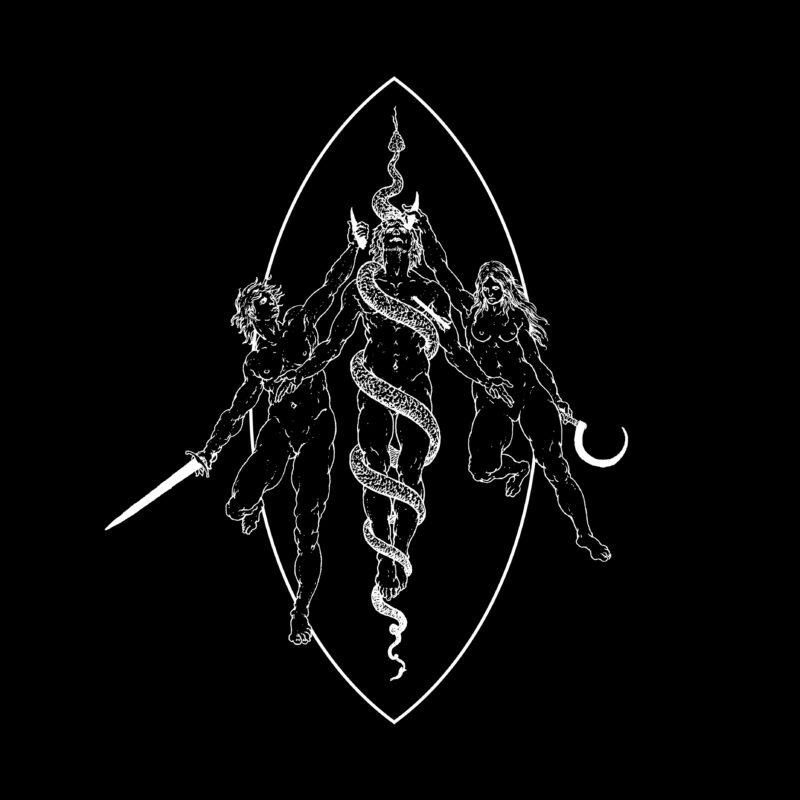
My guess, looking at your discography, is that the conceptual side and what it commands explains ANGRENOST’s musical journey over the last decade. How far from the truth am I?
Pursan – You are completely correct. Absolutely true. Not only is this the reason for the heterogeneity of our discography, but it also absolutely marks the composition process in ANGRENOST. Before writing a single word or playing a single note, we always start by idealizing a concept that we want to explore artistically, intellectually, and philosophically. Only after these aspects are clarified do we proceed to the creation of an album.
The composition process in ANGRENOST always starts with the lyrics. For me, personally, the lyrics are of extreme importance and should be treated with the utmost elevation. I do not write just in any way and not with the intention of merely filling a song with vain words. I know that most of the time, lyrics in Black Metal are completely and criminally neglected, but for me, they often make all the difference in the personal recognition of what I can or cannot consider a good Black Metal work. According to my experience, generally when I recognize the quality of good work, the lyrics coincide with the musical and artistic quality of it.
After the conclusion of the lyrical component, begins the musical composition work, which is designed to dress each lyric in the way that suits it best.
Musically, ANGRENOST’s albums had various composers. In the EP “Evil,” it was A.Ara, in “Planet Muscaria” it was myself, in “Nox et Hiems” it was W.uR, and finally, for “Magna Lua Ordem Mística” it was A.Ara again.
From a purely aesthetical and compositional standpoint, ANGRENOST’s works are indeed very different from each other, yet there is a spear that runs through all of them in the same way. As I argued earlier, Black Metal should be guided by certain ideological norms that I consider should be immutable and inviolable. These principles are common in all the works. On the day that ANGRENOST ceases to be inspired by the principles that have elevated Black Metal to the extreme form of art it is recognized as, ANGRENOST will simply cease to exist. Regardless of the sonic direction we may or may not follow, Black Metal is not just music, and that is precisely the reason it is so different from any other musical genre.
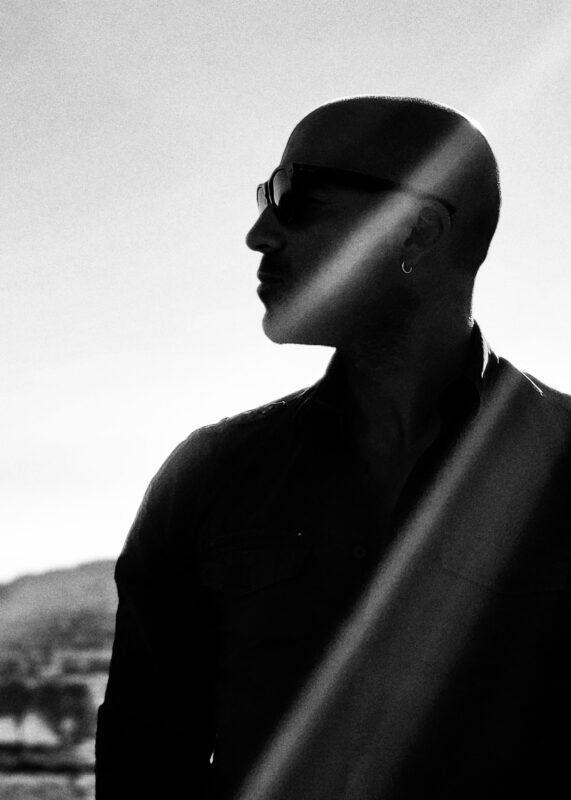
I just mentioned EMPEROR as a reference for some of the moods you summon, but it’s a flawed comparison. It may work for the majestic aspects of your songs, but there’s much more to them. If we were to reason in rational terms, do you feel that there are some bands that were influential over the writing process of Magna Lua Ordem Mística? To my understanding, it is an album that is part of a current, of a history that dates back several decades, but stands in the obvious shadow of no one. Perhaps this can be seen as the result of your long experience as musicians.
A.Ara – Not a simple reflection to comment on, or at least in being that succinct, to which I will fail considering the length of what I’m about to write.
When I started writing the music for this album, I considered two fundamental elements. The first was obviously the lyrical concept, my interpretation of it and conversations that Pursan and I had around his thoughts behind the lyrics. The second element was ANGRENOST itself. We both started this collaboration in 1995, a different age, in a way magical times, filled with an incandescent energy and chaos. Working again together, we were now picking it up from where we left ANGRENOST 25 years ago, bringing to life what I see as our first album.
And in doing so, we have dived with no safety harness deep into the chasm of a bygone age. Not looking for inspiration, but to retrieve an old inner fire, rekindling and spewing it with sulfur and smoke as plagues back into this world.
As for concrete conscious musical influences on this album, rationally speaking, there are none. I would however be dishonest to say that I am void of influences. Each of us has a personal continuously developing story in how music shapes us and such influences are unconsciously always present. When we compose, when we listen and how we interpret music. So, maybe the simplest is to share with you some elements of my own story.
I had the privilege to grow in a family where music and art in general have been always present and encouraged. At the age of 6, visiting relatives in Lisbon, I was browsing through a large vinyl collection and found two albums that were then offered to me: KISS’s Destroyer and AC/DC’s For Those About to Rock. While these two records triggered in me a certain curiosity, their specific influence ended up being pretty much inexistent. They were however of paramount importance several years later for completely unrelated reasons, as I will share in a minute.
Following this triggering moment, I quickly started devouring music from bands such as LED ZEPPELIN, RAINBOW, DEEP PURPLE, BLACK SABBATH, IRON MAIDEN, METALLICA and SLAYER, eventually getting very interested in acts such as VOIVOD, EXCITER, SEPULTURA and SODOM. Sometimes intentionally, others not so much, I was exposed from a very young age to classical music and artists so diverse as GENESIS (Peter Gabriel era), KING CRIMSON, EL&P, early PINK FLOYD, JOHN CAGE, JOHN COLTRANE, MAHAVISHNU ORCHESTRA, JOY DIVISION, SIOUXSIE and the Banshees or early DEAD CAN DANCE. Later on, to acts such as NAKED CITY, Mão Morta, several bands associated to Cold Meat Industry, NIN or Shannon Wright. Many from this diverse long list influenced me consciously, in particular albums like Nursery Cryme or Within the Realms of a Dying Sun, others impact was unconscious or more in terms of developing an overall musical sensibility, driven through a common thread of music channeling extreme emotions and a certain darkness. As where it relates more specifically to the art to which we have dedicated our lives, when I was close to 11y.o., a friend of my older brother who knew I had the mentioned LPs of KISS and AC/DC asked me if I would trade them. When I asked what for, he showed me some LPs and my attention was immediately drawn to two albums with a black cover: one with a logo in gothic letters and an image of a goat. The other with red flaming letters and a white inverted cross. From the moment I played them I felt an unexplainable attraction to the darkness they projected. And so, I came to discover BATHORY’s debut album and POSSESSED’s Seven Churches that I traded for an album of KISS and AC/DC. I started listening both albums in repeat and eventually started exploring those bands discography, in particular BATHORY.
It was also around that time that I started playing guitar, first self-learnt, followed later by years of studying classical guitar. As the page turned into the 90’s, some of the bands I admired the most suddenly seemed to lose the flame that fascinated me (starting with BATHORY’s later releases, followed by VOIVOD with Angel Rat, among others). At that time, I was extremely isolated, dealing with close death in my family and had a very reactionary stance to this. I tried exploring some new bands and music styles but couldn’t find anything moving so kept returning to the same old LPs with die-hard fanaticism. Until 1994, when in high school I met Pursan and another friend who now organizes SWR fest, who showed me some of the bands, (mainly death metal) that were spawning from the underground, especially Greece and the Nordics and together we discovered what are now considered the classics of these genres. Anyone nowadays can find all these releases and those times have been interpreted ad nauseam. Now, don’t take me wrong, I’m not saying that someone today can’t feel truly inspired by the music from those years. But to put things into context, listening to something from ’94 nowadays which is 30 years ago is like listening to Please Please Me from THE BEATLES in ‘94. The impact has to be different. Even if nowadays, someone can feel touched by it, it is impossible to understand with today’s eyes and ears what then one felt like when first listening to albums such as A Blaze in the Northern Sky, Live in Leipzig, Det Som Engang Var, Suomi Finland Perkele (and Ugra Karma), Eosforos or In the Nightside Eclipse, to name just a few with a special meaning to me. It was as the evil darkness of BATHORY, the progressive violence of VOIVOD and the religious mysticism of early DEAD CAN DANCE all converged into a new larger form of energy. More than a particular band or release, it is the spirit of that time. The gates opened and we were pulled into a state of chaos and ever moving energy that once experienced, no one was left unscared. As we, however know, that raw rebellious energy which drew us into this path, was not accompanied in many bands by a strong ideological spine, with many of such innovators quickly desecrating this art form in exchange of recognition and its advantages. Still today in the comfort of their status, cashing in the windfall from their early days output. It was up to some of our generation at the turn of the millennium to strike with a hammer and inject Black Metal once more with a sense of danger but now embraced by a strong ideology, having delivered exceptional albums both in musical and ideological terms. Your label output is a testament to that.
So, musically speaking, this is where I come from. While I have drank the poison from different serpents, you may call me reactionary, conservative or orthodox on how I see Black Metal. It is a total art form. And as such, I truly believe that more than the music, what is key to it are the energy and ideology that shape it. And frankly speaking, these have remained immutable for over 20 years now.
–
Magna Lua Ordem Mística is comprised of eight songs, each one adorned by a drawing courtesy of the very talented Manuel Scapinello. His work is arguably in a lineage going from Albrecht Dürer to Gustave Doré. In a sense, I get the feeling that the album’s narration is one of initiation, where visual symbolic language, rooted in esotericism, adds several layers of possible interpretation. I view it as a work of total art meant to speak to the heart, to the mind, and to the soul at once.
Pursan – Exactly. The album was conceived as an integral piece and as a form of total and complete artistic expression. The visual component was meticulously thought out, and everything designed by Manuel Scapinello has a reason for being, with a very unique symbolic and esoteric meaning. From the cover to the eight engravings that bring each of the eight themes to life, everything follows its own code, hidden in the characters, objects, and surroundings, mirrored in the drawings.
For a long time, I had the ambition to write a conceptual album inspired by the Moon. It took time to take shape because I think it required a lot of knowledge acquisition and personal growth on my part. This is because the goal was never to explore the Moon as a nocturnal body in the skies, so to speak, but rather from an archetypal, symbolic, and esoteric perspective. Since I was young, I have been curious about the occult. One of the arts I delved into most was astrology. Astrology, if studied deeply, intersects with many concepts, from alchemical to cabalistic. The entire work is impregnated with this symbolic language.
From an aesthetic point of view, A.Ara and I discussed among ourselves what the right approach would be for the type of album we wanted to make, and yes, Gustave Doré was one of the names that naturally came up. Shortly after deciding on the visual direction we wanted for the album, we researched the work of several illustrators, and Manuel Scapinello, with his very characteristic style, seemed more than capable of the task.
The challenge was to convey to Manuel all the meticulously pre-thought-out symbolism and imagery. Despite being an excellent illustrator, he had no freedom to interpret the themes in his own way. He executed everything that was already planned long before his collaboration with ANGRENOST. I can say that it was very easy to work with him, as he was always very receptive to any corrections or improvements suggested by us. I think technically, the work turned out excellent, and all parties were very satisfied with the final result, including Manuel.
Conceptually, the work is very intricate and complex. It is very rich and much can be gleaned from it if one is willing to delve into the album more seriously and deeply. I am well-versed in esoteric astrology, and I used the eight lunar phases from the New Moon to the Balsamic phase as a metaphor for the cycle of Man on the earthly or material plane, if you will. From the moment of birth, when the spirit disconnects from the immaterial plane, to the moment of death, where the spirit returns to the immaterial plane. During this period, Man is subject to the corruption of the flesh and the decline of the body, unable to escape the laws of creation and the impermanence of the physical plane. Metaphorically, we can look at the lunar phases as identical processes of a seed, which awakens until it becomes a fruit, a fruit that, once mature, rots until it becomes a new seed again, perpetually and cyclically. Man, like a seed, is born, grows, reaches his peak until it withers to the ultimate encounter with death. In this process of depuration, Man is subject to the corruption of the soul, from pure to impure. Such is the material plane, subject to the laws of impermanence, where everything created is equally sustained to be destroyed. All of this happens simultaneously, whether we are aware of it or not.
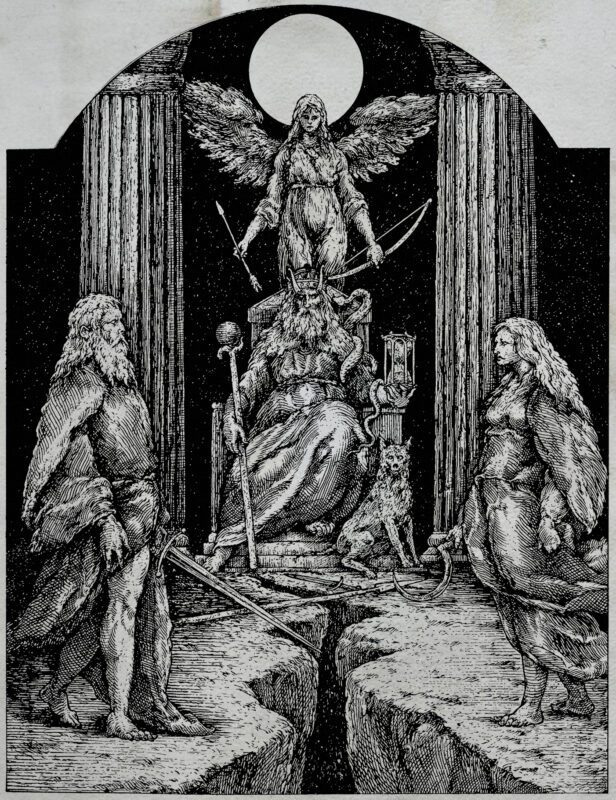
I’ll open the book a bit more to give some clues for the symbolic interpretation hidden in this work. In “Magna Lua Ordem Mística” there are five characters. The five function as archetypes in a metaphysical narrative for the earthly experience. The five are the Moon, which represents the Soul, transient in nature, illustrated in the female figure in the engravings. The Sun, representative of the Spirit, permanent, illustrated in the Old Man who, contrary the Moon, grows younger as the phases evolve. Man is represented in the newborn who grows alongside the Moon. Death, the winged angel armed with a bow and arrow. Finally, the Serpent, always the same age as it is immemorial, representing knowledge, the one that corrupts Man, but which drives him in his process of evolution and even deification. By understanding these five archetypes represented in the eight engravings, a new light can be shed on the interpretation of the tracks.
In this process, we use the horns as a metaphor for the corruption of Man, who in the first theme “Interlúnio: O Arco escuro e a Seta de prata” (Interlunar: The Dark Bow and the Silver Arrow) is a newborn still without horns but with Death’s arrow embedded in his heart, indicating that life does not escape the laws of time, that the hourglass has been turned. In this illustration, we can see the angel of death at the door of the Dark Temple from where a river (of silver) flows, and with it, the Serpent that, from birth, pursues and permanently accompanies Man on his journey to death. Death that at the same time lets him go and marks him at his birth, to embrace and devour him at his death, an episode depicted in the 8th theme “Balsâmica: Nos fumos esquecimento, dédalos de enxofre” (Balsamic: In the Fumes of Oblivion, Mazes of Sulphur).
The horns in Man are full of meaning. Note that they accompany the growth of Man until they reach their peak, an episode represented in theme 5 “Água Real: Na ampulheta o Diabo, enxofre por firmamento” (Royal Water: In the Hourglass the Devil, Sulphur across the Firmament). Here, the horns have reached their maximum potential, as has Man, represented in the archetype of the Devil. In “Magna Lua Ordem Mística,” Man is the fallen angel himself. In the engraving of theme 5, we can see how the staff opens an abyss separating Moon and Sun, Soul and Spirit if you will. There, all the characters are the same age, as if they met at the creation of the mentioned fruit in the Full Moon phase when it is at its ripest.
From theme 5 onward, the Moon (Soul) begins to lose its strength. Note how the horns start to break and Man, like the Moon, begins to wither with them. I think with some of this symbolism that I have now shared, more keys can be given for the interpretation of the work.
As I said earlier, the album is very rich and complex, symbolically and conceptually, and it is very difficult to fully translate it in a few words.
The album cover is like a compendium of everything explored throughout the themes. After the seed awakens, a moment translated in the Vesica Piscis that surrounds Man, he, as the fallen angel, is condemned to purification through the corruption of the flesh. No matter how much he grows horns and makes them flourish in an act of defiance to the divine, they will inevitably and cyclically be broken by the laws of impermanence. There is no purification without corruption. There is nothing in the physical plane that will not inevitably experience decline.
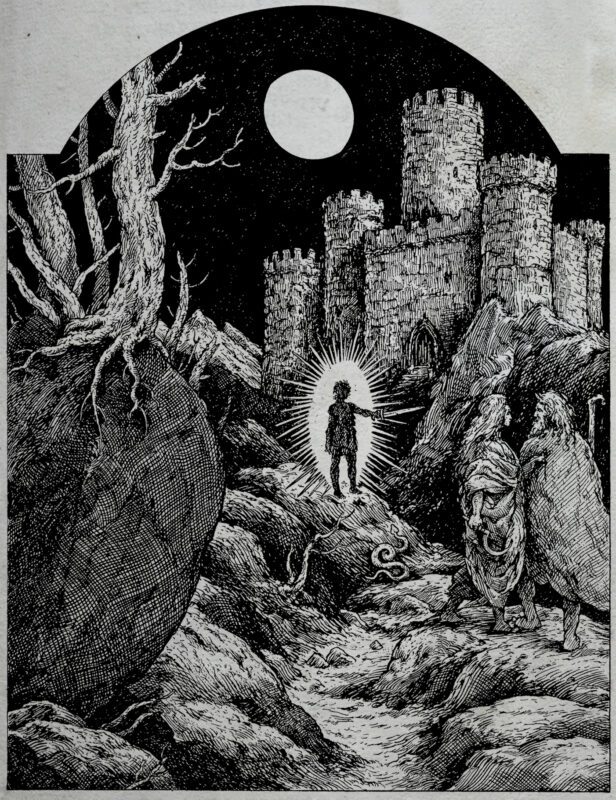
You decided to trust Tore Stjerna for the mixing and mastering of Magna Lua Ordem Mística. Tore is someone we worked with two decades ago already, as he contributed in various positions to recordings by FUNERAL MIST, MALIGN, OFERMOD, ONDSKAPT, and of course, last but not least, WATAIN. His involvement with the latter is ongoing and Tore has since expanded his reputation by working for MAYHEM. With such a pedigree as a producer, you were certain to hire a seasoned professional. But also a producer with an overwhelming identity that could, possibly, overshadow your own ideas for Magna Lua Ordem Mística. Would you care to share some insights and memories of your collaboration?
A.Ara – It has been over 20 years that Tore and I know each other and he is someone I deeply appreciate both professionally and personally. As it is the case with other established producers before him, such as Pytten, Dan Swanö or Peter Tägtgren, who were involved with iconic releases, it is only natural that a certain identity starts being built around your work and you develop a signature around some of your sound elements. Considering the bands you mention and the impact they’ve had, it shouldn’t come as a surprise that the same has happened with Tore, and a lot of people back in the days started talking about and looking for the “Necromorbus sound”. What I find curious is that, if you listen attentively to most of the releases of the bands you just mentioned where he was involved, the production in each of them is actually VERY different. Just look at WATAIN’s albums, each of them has a really different production. While both have an imponent soundscape and a crushing drum sound, Salvation from FUNERAL MIST and ONDSKAPT’s Dödens Evangelium sound and feel very different. And how far are these from BLACKLODGE’s SolarKult<, another EAL release?
What I believe all of the above have in common are a very strong concept and vision by the individuals leading the bands, understood and translated by Tore into meticulous choices and production decisions. An exceptional attention to technical details and craftmanship in executing a vision. Now, does every single band and release have the same approach as what I just described? Maybe not. Maybe some don’t know what they want, and the producer overshadows their ideas, or simply does what he thinks make sense in the absence of direction. Maybe others’ goals are to sound like these releases, and as such eventually end up mimicking them to the extent their musicianship allows. Who knows.
Now coming back to ANGRENOST, I had talked to Tore about what we were doing with ANGRENOST and in winter ’22, while the two of us were together in Viana do Castelo, he suggested that he could help us producing the album. We discussed this possibility within the band, and all agreed it made full sense. There was a very clear concept and idea of how we wanted to transmit it through the music and Tore clearly understood where we came from and the soundscape to be shaped. Of course it was a collaborative effort with discussions, a challenging exchange of ideas, but doing so with someone you know for so long, has lived through similar times and is so knowledgeable, makes everything much simpler. The process was as smooth as it can be and here, we have to also thank Guillaume Martin who was working with Tore as well as yourself for the suggestions you shared as we progressed.
Pursan – One of the things I admire in a good producer is the ability not to repeat the same formula from band to band, or from album to album. The producer should function as an instrument to elevate what each work demands. No two projects are the same, but there are producers and studios that simply clone the bands they produce. Tore doesn’t operate this way, and to understand this, just take a look at his portfolio. Even if it’s the same band with multiple albums produced by him, they don’t sound the same. He has the ability to read each work and give it its own identity. Whether you like the works or not, Tore has simply legendary albums under his belt. From ARMAGEDDA’s Only True Believers to FUNERAL MIST’s Salvation and even WATAIN’s Lawless Darkness and everything in between, you cannot accuse him of repeating the same formula from project to project. He understands what the band wants and what the album needs, giving each its own identity. This is Tore’s best quality.
In the case of ANGRENOST, it was surprisingly easy to work with him. In a preliminary conversation about the production, we told him our vision for the album, and he simply materialized what we suggested according to his own vision. Besides having a very well-equipped studio, he is technically very good at what he does. During the production of the album, there were very few notes from our side, but whenever we did suggest something, Tore was always very receptive. I never felt that his ego interfered with anything.
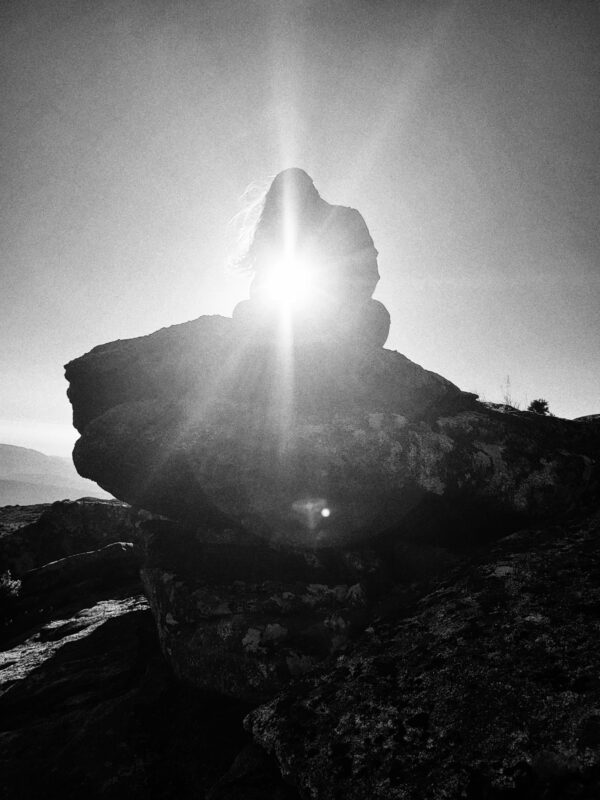
A distinct characteristic of Magna Lua Ordem Mística is the use of the Portuguese language. This is something you started to experiment with on your previous album from 2017, Nox et Hiems, although Portuguese wasn’t dominant at the time.
I vividly remember the discovery of the sonorities of the Czech language on MASTER’S HAMMER’s Ritual, and it makes up a significant part of that marvelous album’s identity. The much-famed Norwegians wouldn’t be shy about using their own tongue either a year or two later. Was there perhaps a conceptual rationale for using Portuguese on Magna Lua Ordem Mística? Let me add that I find it an absolute success from a strictly musical point of view.
Pursan – Personally, I find the question very interesting. You mentioned MASTER’S HAMMER, and I was suddenly transported back in time. Not so much Ritual but Jilemnicky Okultista was an album that both A.Ara and I listened to a lot back then. Great album! Yes, not only that, but the fact that they used their native language gave Master’s Hammer a lot of identity, which always had its own signature without ever following trends or fashions.
In fact, in Nox et Hiems there are 4 tracks sung in Portuguese, 3 in English, and 1 in Latin, so Portuguese was the predominant language on the album.
I’ve always liked Portuguese literature. José Saramago is my favorite writer. I admire him a lot and his work. As a writer or lyricist, I always felt that writing in English was quite limiting for me. It was always challenging to translate onto paper everything that my soul and mind had to express using English. After Planet Muscaria I decided that I didn’t want to be directly involved with the musical component anymore but rather be 100% involved with writing and vocals. It was when I started writing the lyrics for Nox et Hiems that I decided to venture into Portuguese. I realized that the way I could express what I wanted lyrically was much more fluid and natural. However, I felt quite insecure about how it might turn out when recording the vocals in the studio. To avoid the risk of compromising the album if Portuguese didn’t work sonically, I ended up including some lyrics in English and even a track in Latin.
When the day of recording came, I had no idea how it would sound or how I would feel singing in my own language. The experience was revealing for me. I felt the words in a way I had never experienced before. Every syllable of every word had a new and different vibration. It may sound cliché, but I felt more genuine reciting the lyrics in Portuguese. After what I experienced, I realized there was no going back to the old English formula.
After Nox et Hiems I realized I could lyrically explore fields I had never allowed myself to explore or venture into before. Modesty aside, but Magna Lua Ordem Mística is very well written, and achieving its literary level in English was unthinkable.
From its conceptual phase, I always wanted the album’s vocals to sound declamatory because the lyrics are partly written with that intent. Like dialogues with the abyss. At the same time, I wanted them to be intelligible, and I believe we achieved that purpose with distinction. For someone who understands Portuguese, it is possible to grasp almost entirely what I am reciting.
From what I’ve gathered, for those who don’t understand Portuguese, my vocals sound dark and almost ritualistic. I find it very interesting how those who don’t master Portuguese interpret my vocals sonically and musically. I am more from the Aldrahn, Dead, or Attila school, so it’s known – either you love it or hate it, but I am totally at peace with that.
A.Ara – Language is a key element of one’s identity. So, expressing yourself in the one that is the most natural to you, seems like an obvious choice. In particular if your goal is to channel deep energies, that should always bring the best results, natural and honest. It is magical when one sings in their own language and truly feels the lyrics being sung. On my side, for many different personal reasons, today I am strangely more versed in English than Portuguese. To this day my reference of singing in one’s language is the work of Aldrahn who transmits in early DODHEIMSGARD and his contribution to DIMMU BORGIR’s first album, in my view, exceptional examples of singing with passion in one’s own tongue. Regarding the musicality, I believe it is easier to focus on it when listening to a language one doesn’t understand, as the vocals end up in many ways perceived almost as an instrument. But when you also understand what is being sung and in a language close to your heart, well, then it is a different experience all in its own.
One curiosity, regarding Portuguese language is that while its roots are Latin, the phonetics are very close to Slavic languages. Both have nasal vowels, share some similar consonant clusters and vowel harmonies. I was made aware of this when living in Poland and experienced how easy it was to understand and replicate some Polish language sounds or break Polish words into phonemes. I wonder, how those that don’t understand Portuguese, perceive it when listening.
–
I am personally of the opinion that people often underestimate, within Black and Death Metal, how much of a difference the man sitting behind the drum kit will make (preferably, to be fair, in conjunction with a talented bassist).
How a drummer manages to be creative and dynamic in genres that are by default quite codified, with beats that offer little leeway for variation, is something fascinating to behold. In the person of Magnús (ex-Svartidauði, Misþyrming), you have collaborated with someone who can add musicality when necessary, power or atmosphere when called for, and who refrains from overdoing it when other instruments need to shine. In a nutshell, one of the best drummers around currently with an incredible sense for songwriting.
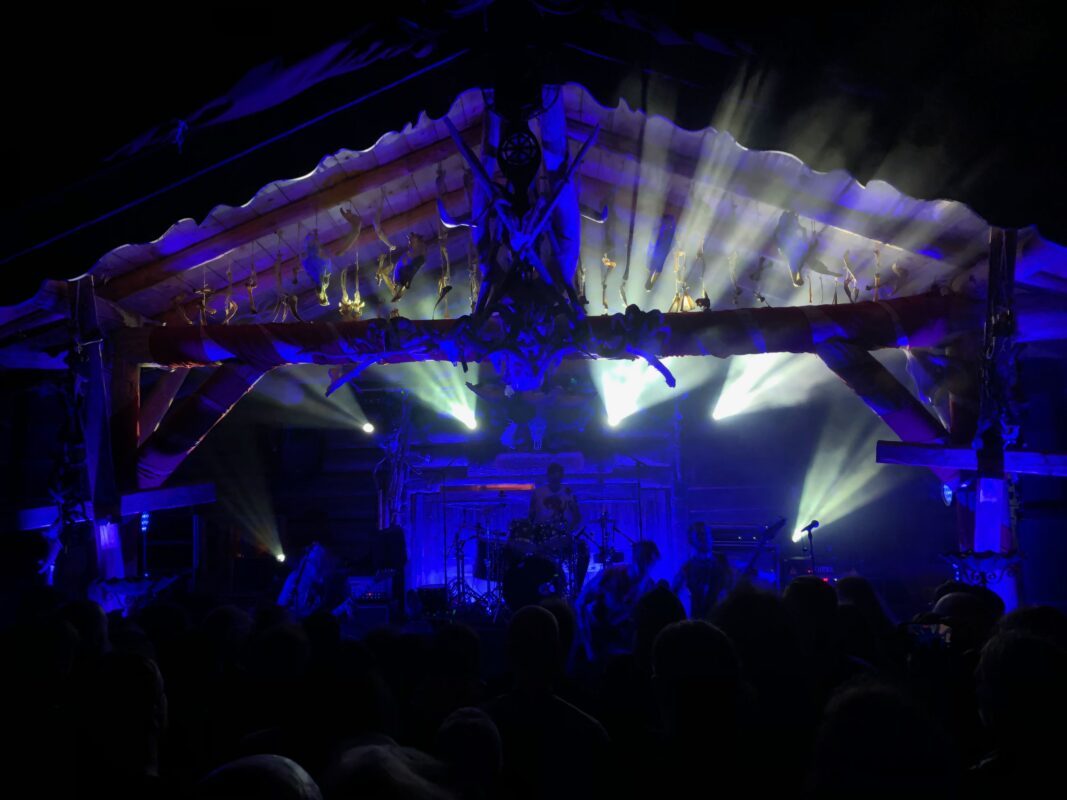
A.Ara – Couldn’t agree more, and would add across any genre deriving from Blues and Rock&Roll. What would RAINBOW’s Rising be without Cozy Powell and Jimmy Bain? Or the seminal works of BLACK SABBATH and LED ZEPPELIN without Bill Ward & Geezer Butler and John Bonham & John Paul Jones, just to state three of so many examples. And why wouldn’t the same apply to Death and Black Metal? Can you imagine Altars of Madness without Pete Sandoval’s vicious drumming or VED BUENS ENDE’s Those Who Caress the Pale without Carl-Michael & Skoll? I could go on and on. That said, in my view, it has nothing to do with speed or perfection and tightness. On the contrary. What distinguishes an exceptional work from a, so to say, good work is indeed the sense of songwriting combined with the dynamism and variation of intensity of playing.
And here we come to Magnús. I knew from the moment I started composing this album that he was the perfect fit and the person we should invite to participate. I really appreciate the work and songwriting he has delivered with Svartidauði. Moreover, I believe that joining Misþyrming, has helped him with increasing his intensity and stamina, complementing his drumming skills. Whenever I listen to him playing, it brings me to a different age, when music was more organic and intuitive, with a wild energy. And to be completely open, while there are a lot of amazingly technically gifted players within these genres, I struggle to compare his style of playing with anyone within the Death or Black Metal genres. Not wanting to directly compare his work with such legends, the two names that repeatably come to my mind whenever I listen to him playing are John Bonham, who I mentioned above and Billy Cobham. I believe you understand where I’m coming from.
Magnús and I first met about 11 years ago when Svartidauði was playing in Finland through my wife who was an old close friend of one of their members. We didn’t however remain in contact. Fast-forward to July ’22, Stephen Lockhart was very kind to help me get back in touch with Magnús. I shared with him some demo songs of the album with drums programmed by Erdsaf, we had a video call with all band members to provide some context into the overall concept and Magnús agreed to jump in and perform the drums.
I joined Magnús to record the drums in Reykjavik with Stephen in October ’22. At that point, beyond the musical skills, we all knew each other better as individuals, the values that drive us and how we approach this art. It was just natural that Magnús joined ANGRENOST as a full member, which he did. We have now a very well-functioning lineup and hopefully it will continue that way. We found what I believe is a very balanced way to collaborate and compose, considering the distance and hectic schedules.
Pursan – What I’m going to say will always sound biased, but yes, Magnús is simply one of the most distinguished drummers playing today. The way he approaches the instrument is completely different from the average heavy music drummer. I don’t know if it’s because of his jazz education, but he indeed has a completely unpredictable and unconventional way of interpreting the instrument. Personally, it is a source of pride for me to have him part of ANGRENOST and to know that his decision was based on recognizing our merit both as musicians and as serious individuals in how we approach our art. He is known for his way of playing and executing more mid-tempo approaches, but on “Magna Lua Ordem Mística,” he has some of the most incredible blast beats I have ever heard. Simply amazing and superlative! The way he articulates the kick drum with the bass during the blast beats is something out of the ordinary and carries his trademark.
–
I came across the following sentence the other day, attributed to Franz Kafka: ‘It is difficult to speak the truth, for although there is only one truth, it is alive and therefore has a live and changing face.’
You once mentioned being influenced by the esoteric concepts of various secret societies. Spiritual teachings in the western world, no matter if from the right or left-hand path, often have a very rigid, doctrinal aspect to them… And how could I speak out against strict fanaticism myself, coming from that school of thought and knowing well what a deadly tool it is! This being said, if we are on a quest for truth, no matter what that word may imply, isn’t Kafka right to point at the flickering notion of a changing face? And if he’s right, then doubt becomes a very central part of the journey, doesn’t it?
Pursan – I was actually familiar with that reflection by Kafka. In truth, it is the acknowledgment of something quite evident if we are honest. From my perspective and experience, Black Metal, especially given the orthodoxy contained within the laws that formed it as a countercultural movement, has always been subject to ambivalences and contradictions due to its rigidity. Truth, as I understand it, is something absolute and immutable, which is impossible in the physical plane governed by all the laws of impermanence. If we think coldly and analytically about the meaning of the word “Truth,” it translates to nothing more than “impossibility of change.” If we are honest with ourselves, it is easy to see that truth is always, in fact, something incomplete and in constant mutation. In esoteric terms, from the moment there is a transgression from the immaterial plane to the material, that something immediately becomes subject to mutability and corruption. If Truth is truly absolute, that absolute must be immutable because it is perfect, hence the Kabbalistic concept of Ain Soph Aur, as the divine breath of God that animates everything.
Kafka, in his works, sublimely tries to explore this concept, the impossibility of perceiving the truth due to the bureaucracy and layers between Man and the search for a truth in a society itself so imperfect.
When I said in another interview that in ANGRENOST, we rely heavily on initiatic and esoteric concepts typically taught in secret societies, I also mentioned that this happens to create our own codex without following any specific dogma.
Even if we consider this musing of Kafka regarding the concept of what Truth is, what would make one initiatic current more truthful than another? Personally, I consider it utopian.
Truth is a utopia that one seeks but is impossible to attain, and the mechanisms of creation are based on these cogs.
In ANGRENOST, at its genesis, we explore the concept of “Evil within Man.” This has always been the primary reason for its existence. The language used has changed throughout the works, obviously. Our vision of the world and of ourselves is not the same as it was 30 years ago. However, something remains the same, and it is this very concept of wanting to explore the darkness inherent in the human experience. Even here, one can understand that truth may exist in this physical plane but only as a concept. Truth is nothing more than a concept. In the case of ANGRENOST, mutability is forbidden in a certain sense, because conceptually, it only serves that very purpose of exploring, delving into, and philosophizing about the darkness inherent in the human experience. Considering that an absolute truth, if anything changes, ANGRENOST will cease to exist.
A.Ara – In my view, should you look at truth as a path one pursues and not as a finite construct per se, then doubt is indeed a close companion in that journey. It is a path that leads one further and further away from the shackles of our humanity, releasing the boundless energies of our animality. It is not an objective path, some kind of noble quest for righteousness, or superior morality so to say. But shaped by our instincts and desires, unrestrained and liberating while corrupting and destroying our integrity. And who would not face doubt and the fear of shattering one’s humanity and murdering the self, when trailing such path? Truth understood as an immutable absolute belief, with no doubt is comfortable, it is easy, both when prophesized by left and right. It is a construct that helps us explain the world, as social groups and individuals, to set rules, to feed and build the self. Enticing as these constructs may seem, they still bound us to rationality and utility, categorizing and explaining the world to create a sense of moral superiority and integrity, segregating and preserving ourselves as superior beings. In a way there seems to be this constant tension, a need for absolute truths, individual meaning and sense, while unconsciously and painfully knowing it in fact brings us closer to enslavement than to salvation, which paradoxically might be closer attained through the grace of evil. Humanity looks at these tall and grandiose temples of truth it has built in awe. Purposedly ignoring or failing to see the cracks in their foundations, the evil that slowly corrupts and breaches them to the continuous flow of primal energies, while they grow taller in reach for the sun. With God and Science not sufficient, Man has now found an answer in himself and his creations and machines that provide at the point of our fingers meaning and relevance for each of our idiosyncrasies and with whom we proudly share our lives, while they tame and further enslave us within the confinement of our self – whose gravity and many faces choke us again and again. Our humanity, precious at it may seem, is what we must lose if we embark in the path of truth.
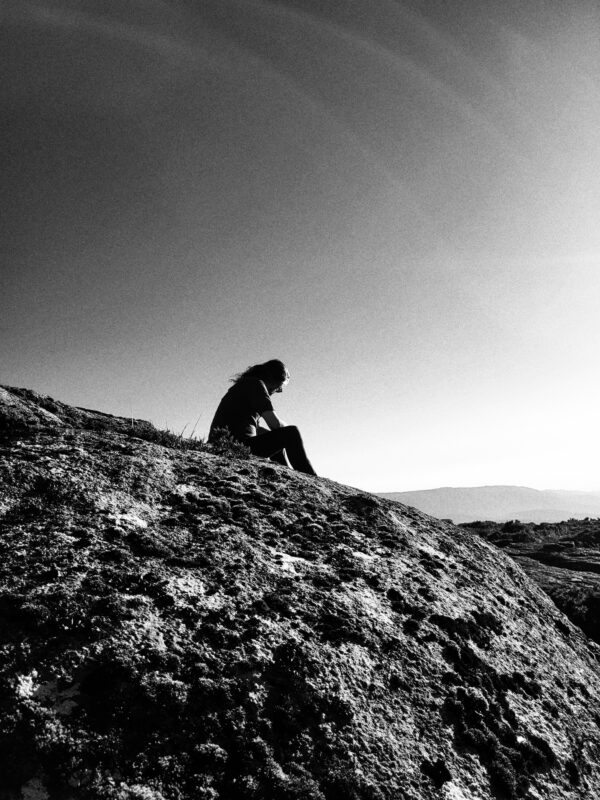
The first Portuguese band we worked with was SUMMUM MALUM, releasing their vicious 10’’ 666 back in 2000 via EAL Productions.
Given that ANGRENOST’s demo, Evil, dates back to 1998 and that you have been involved in the scene for a very long time, I was wondering if you could share some memories from your local scene around the turn of the millennium. The mainstream will probably remember MOONSPELL, and those more versed in the underground will know names such as DECAYED, FILII NIGRANTIUM INFERNALIUM, or, of course, CORPUS CHRISTII. Your scene also attracted the attention of some Norwegian celebrities, such as Samoth, who released SIRIUS’ debut Aeons of Magic through his label NOCTURNAL ART PRODUCTIONS in the year 2000…
A.Ara – Interesting you mention SUMMUM MALUM’s 666, as Erdsaf, our bass & keyboard player was the one who recorded that ep. I believe it was one of his first recordings. And did you know that ep was recorded here in Viana do Castelo? Erdsaf was in touch with the two members of SUMMUM MALUM, having met them in Porto. The family of a friend of his had recently acquired an old derelict house close to where we are. It had a stone basement that looked like a dungeon, perfect for recording, as it ended up being the case. It was recorded live, with a 4 track Yamaha MT1x that Erdsaf owned. It’s a small world.
Before those days, when Pursan and I started ANGRENOST we were very isolated, both geographically, living in a small peripheral city in the north of the country, as well as how deeply we felt and dealt with Black Metal art. There were very few points of contact with the outside. The occasional mail exchange when buying albums from distros and few concerts attended. Back then, Portugal was still part of the touring map, which gave us the opportunity to see bands like SAMAEL, TIAMAT, DEICIDE or AMORPHIS when they were promoting Ceremony of Opposites, Wildhoney, Once Upon the Cross and Tales from the Thousand Lakes. When I moved to Lisbon to study, I went to an ANCIENT RITES concert and met there a person called Constança Bettencourt (not sure if you ever corresponded with her, she was very much in contact with Hervé / MkM). She was extremely dedicated to the Black Metal underground, writing a zine called Rites of Eleusis and owned the best distro in Portugal (among others, she was the official distributor of MISANTHROPY RECORDS in Portugal). To this day she is a good friend. When we showed her our music, she created a label called ANDROMEDA CREATIONS, where our demo Evil was its first release. Constança also presented me to some individuals. You mentioned a few bands, most of them not necessarily something that ever moved me. I will share two projects I found interesting, created around the same time as ANGRENOST but that only recorded a demo some years later and nothing else called RAPTUS and MORS LIBERATRIX. Where it relates to the scene itself, there was a certain cloud of bleakness as in the end of the 90’s Portugal was in the midst of an opioid epidemic, and Lisbon in particular, plagued with addicts and all its implications. Misery tends to be a fuel for extreme art. This said, in many other ways it wasn’t so different from what you yourself maybe experienced when travelling to your capital city and its forests of trash and grey concrete. A lot of intense competition, polarized clans focused on image in detriment of substance and a lot of good old youthful arrogance in some rare cases accompanied by true extremism. This said, my observation is that the scene itself was and has remained, so to say, more metal than black in spirit.
From the individuals Constança presented me to, I remained in contact with Draconiis from SIRIUS, a band which she also released the demo later in 1998. Around that time, Pursan had left ANGRENOST to deal with his personal demons and I decided not to continue it as I don’t believe it makes sense for ANGRENOST to exist without both of us involved. Draconiis and I remained in contact and I helped SIRIUS with the production of their first album in 1999, followed shortly by being invited to join the band as rhythm & lead guitarist. In 2000 we returned to Norway to record the second album we had just finished composing. However, not long after it was released, I left the band as it was moving in a direction which was not aligned with my values. I felt a restlessness and a kind of atavistic urge to return to something primordial and cleansed from what Black Metal was becoming and created STORM LEGION, inviting NH from CORPUS CHRISTII (with whom I played live guitar a couple of times) and Vulturius (at the time from a band called FLAGELLUM DEI and who later created his solo project IRAE) to join. We released in mid 2001 a demo in Drakkar Productions, followed by an EP through our friends from Hiberica the year after, a debut album in Goatwoarex in 2005 and the sophomore in WTC in 2010. It has since been put on hold. It is curious that the only band I nowadays occasionally listen from Portugal is, like ANGRENOST, not belonging to any scene, and geographically very close to us, which is MONTE PENUMBRA.
As I was writing this text, there were two episodes that came to mind. One relates with SIRIUS and the other with STORM LEGION. When we went the first time in 1999 to record SIRIUS in Norway, we met Bård Faust who remained in contact with Draconiis. He agreed to join us the year after to record some spoken vocals on the second album. We had some studio time available and decided to use it to record an extra track, a cover of EMPEROR’s The Majesty of the Nightsky, with Samoth joining us playing bass. It seemed natural to ask Bård if he’d like to play drums in part of it. He joined us for a weekend he had available as part of the progressive transition process from his personal situation. It was his first time behind the drumkit since his work with In the Nightside Eclipse. It felt truly special to see him play once more and the flame and dedication that remained within him, which he still carries nowadays playing with DJEVEL, one of the very few interesting Norwegian bands nowadays. Regarding STORM LEGION, early 2002 when we were recording our EP, NH and Rita of Hiberica were in touch with Timo K. who contributed with the EP cover photo (credited as Cão which means Dog in Portuguese). Timo didn’t ask for any compensation. Instead, we had a bartering agreement, providing him with a very peculiar “good” that he was looking for, which we got hold of and sent to him by mail. To this day I laugh out loud imagining some postman puzzled with the stench inside that package and what would have happened to all of us if someone at some post or customs office would have opened it. There was a certain naivety holding hands with the passion and extremism of those times. I find it hard to imagine something like this happening nowadays where everything is so “professionalized” and aseptic.
Pursan – As mentioned, Erdsaf, who has been with ANGRENOST since Planet Muscaria was responsible for recording the EP 666. The EP was recorded in a now an abandoned house located on the mountain adjacent to the city of Viana do Castelo, where we live and where ANGRENOST was born. Erdsaf, in addition to being an excellent musician and producer, is a key figure in ANGRENOST. His role is crucial, and if he were not involved in ANGRENOST, everything would be very different. He is a very discreet individual, even by his personality, with a life that is even mysterious to us, but fundamental to the entire creative process of ANGRENOST and involved in the Black Metal scene from the beginning.
Speaking about the scene in Portugal is ambiguous for me, and this is due to my nature. I encountered Black Metal in the early 90s, and the Portuguese bands that existed at that time meant little or nothing to me. To be honest, I have hardly ever had contact with the Portuguese Black Metal scene. I was close to Constança Bettencourt, who at the time was responsible for releasing our EP Evil and little more. I have always lived in the city of Viana do Castelo, a small town in northern Portugal, surrounded by sea, river, and mountains. I have always lived in my own bubble, with no interaction with the scene.
I remember the day, many years ago, perhaps around 1998, when I left my small town to go rehearse and meet some individuals in Lisbon, the capital of Portugal. The experience was so disappointing that I decided I no longer wanted contact with the so-called “scene.”
It has to do with my character and personality. I associate Black Metal more with a monastery and seclusion than with an extreme metal movement. For me, being distant from the movement is simply imperative if I truly want to feel inspired to create art under the Black Metal banner. There are some bands and individuals with whom I interact or whom I admire in the Portuguese scene, but it is very sporadic and scarce. I greatly admire MONTE PENUMBRA and W.uR., as well as BLACK CILICE and CANDELABRUM. Interestingly, all these bands are based just a few kilometers from us.
